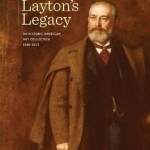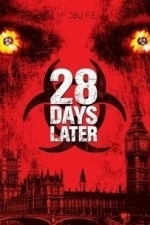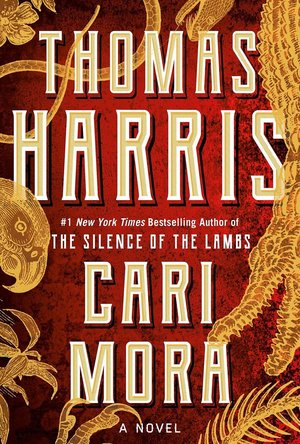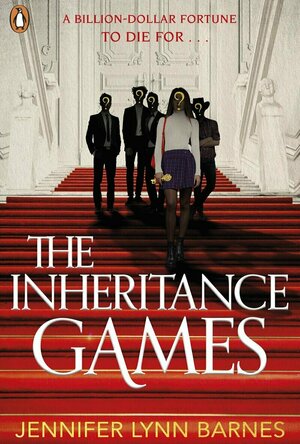Search
Darren (1599 KP) rated 28 Days Later (2002) in Movies
Jun 20, 2019
Verdict: Modern Zombie Gem
Story: 28 Days Later starts by showing a group of activists breaking into a laboratory where chimps are forced to watch some of the most gruesome sites in human history. This was designed to create pure rage and when the chimps are released an epidemic starts. 28 Days Later (title drop) we meet Jim (Murphy) who wakes up in a hospital, alone he searches looking for help but the hospital, streets and everywhere is empty. Wonder around the empty London Jim finds a church filled with infected that chase him before getting save by Mark (Huntley) and Selena (Harris) who also fill in the blanks of what happened.
Jim finds out the harsh reality of the world now but meeting Frank (Gleeson) and his daughter Hannah (Burns) gives them a chance to go to a radio signal left by the military. The group soon find the military holding up in a mansion lead by Major Henry West (Eccleston) but not everything is as it seems.
28 Days Later brings the modern infected zombie film to life in one of the best story ideas we have seen. It is good to see a story that the infection can only be spread rather than you turn when you die which is big change to all we have seen. The journey itself is been there seen that but what we get is a revenge film with infected around once we meet the military. This shows us that the enemy could come from all direction and our characters are never going to be safe in the world now. This is easily one of the best zombie based films in recent years. (9/10)
REPORT THIS AD
Actor Review
Cillian Murphy: Jim waking up alone in a hospital he wonders the empty city before being found by other survivors, with a group he heads to the military safe zone where he ends up having to fight to save the rest of his group from not only infected but the soldiers. Cillian gives a great performance and this put him on the map for bigger roles. (9/10)
jim
Naomie Harris: Selena the nonsense survivor who takes no prisoners which we see from the moment her fellow survivor gets infected. Naomie gives a good performance showing that she was always going to be in bigger films. (8/10)
Brendan Gleeson: Frank caring father who has waited for support before taking his daughter to a radio signal he has been hearing. This character may only be a supporting character but his final moments are one of the most memorable turns in this genre history. Brendan does a good job in what is just a supporting performance. (8/10)
Christopher Eccleston: Major Henry West who is running the military unit that has been calling for the survivors but his motives are not what they seem. Christopher gives a good performance in the role. (7/10)
Support Cast: 28 Days Later doesn’t have the biggest supporting cast we have a couple of other survivors as well as the soldiers in the military unit. They all help as they show us what the characters are capable off.
Director Review: Danny Boyle – Danny does a great job directing this zombie classic that is easily one of the best in the genre. (9/10)
Horror: 28 Days Later uses plenty of horror elements with survival horror shinning through. (10/10)
Music: 28 Days Later uses brilliant scores to build the tension up through the scenes. (9/10)
Settings: 28 Days Later uses the settings really well to show how empty busy places could be when the world comes to an end. (9/10)
Special Effects: 28 Days Later uses great special effects with the infected creation. (9/10)
Suggestion: 28 Days Later is one to watch for every horror fan out there. (Horror Fans Watch)
Best Part: Suspense building.
Worst Part: Nothing
Action Scene Of The Film: Jim breaks into the mansion
REPORT THIS AD
Kill Of The Film: Frank
Scariest Scene: Jim’s returns home
Believability: No (0/10)
Chances of Tears: No (0/10)
Chances of Sequel: Has one sequel with talks of another always around.
Post Credits Scene: There is the alternative ending
Oscar Chances: No
Box Office: $82 Million
Budget: $8 Million
Runtime: 1 Hour 53 Minutes
Tagline: His fear began when he woke up alone. His terror began when he realised he wasn’t.
Trivia: The scene where Jim and Selena celebrate with Frank and Hannah was shot on September 11, 2001. Danny Boyle said it felt extremely strange to shoot a celebratory scene on that particular day.
Overall: Brilliant Infected Film
https://moviesreview101.com/2015/03/14/28-days-later-2002/
Story: 28 Days Later starts by showing a group of activists breaking into a laboratory where chimps are forced to watch some of the most gruesome sites in human history. This was designed to create pure rage and when the chimps are released an epidemic starts. 28 Days Later (title drop) we meet Jim (Murphy) who wakes up in a hospital, alone he searches looking for help but the hospital, streets and everywhere is empty. Wonder around the empty London Jim finds a church filled with infected that chase him before getting save by Mark (Huntley) and Selena (Harris) who also fill in the blanks of what happened.
Jim finds out the harsh reality of the world now but meeting Frank (Gleeson) and his daughter Hannah (Burns) gives them a chance to go to a radio signal left by the military. The group soon find the military holding up in a mansion lead by Major Henry West (Eccleston) but not everything is as it seems.
28 Days Later brings the modern infected zombie film to life in one of the best story ideas we have seen. It is good to see a story that the infection can only be spread rather than you turn when you die which is big change to all we have seen. The journey itself is been there seen that but what we get is a revenge film with infected around once we meet the military. This shows us that the enemy could come from all direction and our characters are never going to be safe in the world now. This is easily one of the best zombie based films in recent years. (9/10)
REPORT THIS AD
Actor Review
Cillian Murphy: Jim waking up alone in a hospital he wonders the empty city before being found by other survivors, with a group he heads to the military safe zone where he ends up having to fight to save the rest of his group from not only infected but the soldiers. Cillian gives a great performance and this put him on the map for bigger roles. (9/10)
jim
Naomie Harris: Selena the nonsense survivor who takes no prisoners which we see from the moment her fellow survivor gets infected. Naomie gives a good performance showing that she was always going to be in bigger films. (8/10)
Brendan Gleeson: Frank caring father who has waited for support before taking his daughter to a radio signal he has been hearing. This character may only be a supporting character but his final moments are one of the most memorable turns in this genre history. Brendan does a good job in what is just a supporting performance. (8/10)
Christopher Eccleston: Major Henry West who is running the military unit that has been calling for the survivors but his motives are not what they seem. Christopher gives a good performance in the role. (7/10)
Support Cast: 28 Days Later doesn’t have the biggest supporting cast we have a couple of other survivors as well as the soldiers in the military unit. They all help as they show us what the characters are capable off.
Director Review: Danny Boyle – Danny does a great job directing this zombie classic that is easily one of the best in the genre. (9/10)
Horror: 28 Days Later uses plenty of horror elements with survival horror shinning through. (10/10)
Music: 28 Days Later uses brilliant scores to build the tension up through the scenes. (9/10)
Settings: 28 Days Later uses the settings really well to show how empty busy places could be when the world comes to an end. (9/10)
Special Effects: 28 Days Later uses great special effects with the infected creation. (9/10)
Suggestion: 28 Days Later is one to watch for every horror fan out there. (Horror Fans Watch)
Best Part: Suspense building.
Worst Part: Nothing
Action Scene Of The Film: Jim breaks into the mansion
REPORT THIS AD
Kill Of The Film: Frank
Scariest Scene: Jim’s returns home
Believability: No (0/10)
Chances of Tears: No (0/10)
Chances of Sequel: Has one sequel with talks of another always around.
Post Credits Scene: There is the alternative ending
Oscar Chances: No
Box Office: $82 Million
Budget: $8 Million
Runtime: 1 Hour 53 Minutes
Tagline: His fear began when he woke up alone. His terror began when he realised he wasn’t.
Trivia: The scene where Jim and Selena celebrate with Frank and Hannah was shot on September 11, 2001. Danny Boyle said it felt extremely strange to shoot a celebratory scene on that particular day.
Overall: Brilliant Infected Film
https://moviesreview101.com/2015/03/14/28-days-later-2002/
Great Villain (1 more)
Great Crime Story
Too many characters (1 more)
Some characters not needed
An ex-child soldier, a violent, hairless man, and a drug lord make up the cast of characters in the Thomas Harris novel, 'Cari Mora.' Mora, our title character, is the ex-child soldier that now lives in Miami, Flordia, where she watches over a deceased drug lord's mansion. This drug lord is the real-life Pablo Escobar.
Written in Harris' crime fiction style, 'Cari Mora' quickly starts with men competing to get to the rumored millions of dollars in gold that is suppose to be at the Escobar mansion. One of these men is a very memorable German character named Hans-Peter Schneider, who readers come to know as someone that is hired to kill/deliver people to rich customers, as well as selling organs on the black market: " He [Schneider] could see his reflection in the glass side of his liquid cremation machine where he was dissolving Karla, a girl who hadn't worked out for business." When Schneider meets Mora, he immediately wants to sell her to a high paying customer.
The novel's main subject is Escobar's hidden gold, but readers also get a glimpse into the underworld of human trafficking and hired thugs. Most interestingly, the story surrounds the dark past of certain characters - - - mostly Mora and Schneider- - - who also happen to be the most put-together characters in all of the novel. All other characters seem to be filler, where most of their stories either don't end or aren't explained. Such as the character Benito, when the reader gets to follow him home, there is a mere snippet about his family life that leaves us wanting more: " Lupe was waiting at Benito's house, in spirit, in the small garden she had made behind Benito's house. He felt her presence warm and close to him as fireflies winked over the white blossoms, luminous under the moon. Benito poured a glass of Flor de Cana for himself and one for her. He drank both of them sitting in the garden with Lupe, and being there together was enough. "
While the treasure hunt is going on, a man named Jesus Villarreal becomes an important character that used to be Escobar's captain- - - and who knows exactly where the gold is hidden; he has not only made a deal with Schneider, but also another drug lord named Don Ernesto- - - if he tells exactly how to get the gold, safely, his wife, son and sister-in-law must be taken care of when he is gone.
This story has twist and turns known in every great crime fiction novel: a woman who is more than what she seems, thugs with guns, dark backstories, and fast-reading action. Yet, the story contains so many characters,even new ones coming in on almost every chapter, that it could be hard for readers to keep in mind who is who, especially with not enough description to tell them apart. Another disappointment is the character named Detective Terry Robles, who had such an amazing story to tell - - - from he and his wife being shot up by druggies to Robles seeking revenge when his wife can't exactly remember who she is,let alone who he is, because of her injury - - - but his story never comes to fruition, and we never get to experience the end of it.
As great as a character Mora is, I personally believe that Schneider would have been a much more interesting view point to read from. The story would have taken on a completely different appeal if the focus had been on strictly him. For instance, one of the most intriguing parts was reading about Schneider's past which may hold the key to why he is who he is : "His parents were in the freezer and he could hear their voices through the door. They could not get out because the freezer door was secured with a chain Hans had tied in an excellent chain knot, the way his father had taught him to tie a chain, shaking the knot until the links jammed tight. "
Although I wish for a different view point, I will say again that Mora is a well-written character - - - her character just becomes flat in certain places- - - but she still makes the story worth reading. Harris did a wonderful job in showing the darker side of life, as he has always done with his Hannibal series. If anyone is a fan of the Netflix show 'Narcos,' or crime fiction surrounding drug lords, they will certainly enjoy this book from beginning to end.
Written in Harris' crime fiction style, 'Cari Mora' quickly starts with men competing to get to the rumored millions of dollars in gold that is suppose to be at the Escobar mansion. One of these men is a very memorable German character named Hans-Peter Schneider, who readers come to know as someone that is hired to kill/deliver people to rich customers, as well as selling organs on the black market: " He [Schneider] could see his reflection in the glass side of his liquid cremation machine where he was dissolving Karla, a girl who hadn't worked out for business." When Schneider meets Mora, he immediately wants to sell her to a high paying customer.
The novel's main subject is Escobar's hidden gold, but readers also get a glimpse into the underworld of human trafficking and hired thugs. Most interestingly, the story surrounds the dark past of certain characters - - - mostly Mora and Schneider- - - who also happen to be the most put-together characters in all of the novel. All other characters seem to be filler, where most of their stories either don't end or aren't explained. Such as the character Benito, when the reader gets to follow him home, there is a mere snippet about his family life that leaves us wanting more: " Lupe was waiting at Benito's house, in spirit, in the small garden she had made behind Benito's house. He felt her presence warm and close to him as fireflies winked over the white blossoms, luminous under the moon. Benito poured a glass of Flor de Cana for himself and one for her. He drank both of them sitting in the garden with Lupe, and being there together was enough. "
While the treasure hunt is going on, a man named Jesus Villarreal becomes an important character that used to be Escobar's captain- - - and who knows exactly where the gold is hidden; he has not only made a deal with Schneider, but also another drug lord named Don Ernesto- - - if he tells exactly how to get the gold, safely, his wife, son and sister-in-law must be taken care of when he is gone.
This story has twist and turns known in every great crime fiction novel: a woman who is more than what she seems, thugs with guns, dark backstories, and fast-reading action. Yet, the story contains so many characters,even new ones coming in on almost every chapter, that it could be hard for readers to keep in mind who is who, especially with not enough description to tell them apart. Another disappointment is the character named Detective Terry Robles, who had such an amazing story to tell - - - from he and his wife being shot up by druggies to Robles seeking revenge when his wife can't exactly remember who she is,let alone who he is, because of her injury - - - but his story never comes to fruition, and we never get to experience the end of it.
As great as a character Mora is, I personally believe that Schneider would have been a much more interesting view point to read from. The story would have taken on a completely different appeal if the focus had been on strictly him. For instance, one of the most intriguing parts was reading about Schneider's past which may hold the key to why he is who he is : "His parents were in the freezer and he could hear their voices through the door. They could not get out because the freezer door was secured with a chain Hans had tied in an excellent chain knot, the way his father had taught him to tie a chain, shaking the knot until the links jammed tight. "
Although I wish for a different view point, I will say again that Mora is a well-written character - - - her character just becomes flat in certain places- - - but she still makes the story worth reading. Harris did a wonderful job in showing the darker side of life, as he has always done with his Hannibal series. If anyone is a fan of the Netflix show 'Narcos,' or crime fiction surrounding drug lords, they will certainly enjoy this book from beginning to end.
Rachel King (13 KP) rated Wither (The Chemical Garden, #1) in Books
Feb 11, 2019
The world that Lauren DeStefano builds in this book combines several dystopian concepts - genetic engineering and reproduction, a virus of epic proportions, anarchy and survival of the fittest. 70 years ago mankind finds a way to make "perfect" babies, and then their babies suffer the consequences - death at 25 for men and 20 for women - with no cure on the horizon. Prostitution, polygamy, human experimentation, wide-scale murder, the prevalence of orphanages, and a country divided on whether mankind is worth saving are all issues in the plot. Plus, all of this takes place after a world war has destroyed all but North America - or so the history goes.
The main character, Rhine Ellery, is forced into a polygamous marriage at the age of 16 to the rich Linden, age 21, along with the flighty 14-year-old Cecily and ex-prostitute, 18-year-old Jenna. Rhine's main goal is escape, but each girl in the marriage has her own motivations and goals. I found their relationships with one another far more interesting than each one's relationship with Linden. Poor Linden lives under the illusions that his aging father feeds him while suffering from the loss of his first love, Rose. While Rhine makes part of her goal to avoid consummating the marriage with Linden, her sister wives have other ideas, but ironically, jealousy among the wives is not the green-eyed monster that I think many would expect. While Cecily is typically self-absorbed and high maintenance, she still wants her sister-wives to bear children, and even Jenna, who hates Linden from the first day, sees no hypocrisy in sharing a bed with him. I also admired Rhine for her extreme patience and endurance with Cecily's immature and naive behavior, though I don't think I would have chosen denial over full disclosure to both Cecily and Linden.
Rhine's secret relationship seems to find it's power in free-formed friendship, without any expectations or requirements. Simply put, Rhine wants her freedom, and she will find it in any form she can grasp. Except for Rhine's memories, almost the entire book takes place on the grounds of Linden's mansion, so I am anxious to see what will happen in the next book in the series, Fever.
The main character, Rhine Ellery, is forced into a polygamous marriage at the age of 16 to the rich Linden, age 21, along with the flighty 14-year-old Cecily and ex-prostitute, 18-year-old Jenna. Rhine's main goal is escape, but each girl in the marriage has her own motivations and goals. I found their relationships with one another far more interesting than each one's relationship with Linden. Poor Linden lives under the illusions that his aging father feeds him while suffering from the loss of his first love, Rose. While Rhine makes part of her goal to avoid consummating the marriage with Linden, her sister wives have other ideas, but ironically, jealousy among the wives is not the green-eyed monster that I think many would expect. While Cecily is typically self-absorbed and high maintenance, she still wants her sister-wives to bear children, and even Jenna, who hates Linden from the first day, sees no hypocrisy in sharing a bed with him. I also admired Rhine for her extreme patience and endurance with Cecily's immature and naive behavior, though I don't think I would have chosen denial over full disclosure to both Cecily and Linden.
Rhine's secret relationship seems to find it's power in free-formed friendship, without any expectations or requirements. Simply put, Rhine wants her freedom, and she will find it in any form she can grasp. Except for Rhine's memories, almost the entire book takes place on the grounds of Linden's mansion, so I am anxious to see what will happen in the next book in the series, Fever.
Andy K (10823 KP) rated Once Upon a Time in Hollywood (2019) in Movies
Aug 14, 2019
I didn't think my face could smile for 2 hours and 41 minutes straight!
Guess what? I ventured out on my day off and went to the theatre for the first time in 2019! (I'm such a loser!)
There are so many QT fans out there and probably just as many who think his films are trashy and pointless. As a true film fan, I can't not love not only his unique approach to film-making, but also his appreciation for the art of film and the constant homages he pays to film of year's past.
The first thing to talk about is the film's perfect tone and look of 1969. The costumes, hairstyles and music of the period was right on, but even more than that was the art direction and cinematography. Almost every scene has a vintage movie poster, retro theatre marquee or period television pram playing in the background. This helps you immerse yourself in this cinematic landscape almost immediately.
Can I also say the movie had opening credits! (Bring them back please !?!)
Basically, a Hollywood television/B movie actor and his personal stuntman navigate their Hollywood lifestyles in 1969 amidst the Playboy Mansion and the Charles Manson cult. The roller coaster goes from movie sets to retro Hollywood and everywhere in between. We also meet Sharon Tate. She loves her world of budding stardom and basks in the opportunity to be famous.
QT takes his usual liberties with historical facts, but can't say too much more than that here. If you are used to this in his other films like Inglorious Basterds, it won't bother you here either. He always seems to manage to make every actor look great and brings the best out of them and this film is no exception. Even actors with smaller roles like Al Pacino, Dakota Fanning and Luke Perry shine in their limited screen time.
As usual, his score was playing constantly throughout the film and complemented the situations remarkably well. I am sure I will be downloading some of them for myself later on.
QT has talked about retiring which would be a shame. I have pretty much loved everything he has ever done so losing a truly one of a kind cinematic voice such as his at such a young age would be truly heartbreaking.
There are so many QT fans out there and probably just as many who think his films are trashy and pointless. As a true film fan, I can't not love not only his unique approach to film-making, but also his appreciation for the art of film and the constant homages he pays to film of year's past.
The first thing to talk about is the film's perfect tone and look of 1969. The costumes, hairstyles and music of the period was right on, but even more than that was the art direction and cinematography. Almost every scene has a vintage movie poster, retro theatre marquee or period television pram playing in the background. This helps you immerse yourself in this cinematic landscape almost immediately.
Can I also say the movie had opening credits! (Bring them back please !?!)
Basically, a Hollywood television/B movie actor and his personal stuntman navigate their Hollywood lifestyles in 1969 amidst the Playboy Mansion and the Charles Manson cult. The roller coaster goes from movie sets to retro Hollywood and everywhere in between. We also meet Sharon Tate. She loves her world of budding stardom and basks in the opportunity to be famous.
QT takes his usual liberties with historical facts, but can't say too much more than that here. If you are used to this in his other films like Inglorious Basterds, it won't bother you here either. He always seems to manage to make every actor look great and brings the best out of them and this film is no exception. Even actors with smaller roles like Al Pacino, Dakota Fanning and Luke Perry shine in their limited screen time.
As usual, his score was playing constantly throughout the film and complemented the situations remarkably well. I am sure I will be downloading some of them for myself later on.
QT has talked about retiring which would be a shame. I have pretty much loved everything he has ever done so losing a truly one of a kind cinematic voice such as his at such a young age would be truly heartbreaking.

The Godfather Game
Games and Stickers
App
For the first time ever, The Godfather officially comes to you as a brand new mobile game in an...

The Australian
Magazines & Newspapers and News
App
The Australian app has been redesigned with a host of new features including improved navigation,...

Layton's Legacy: An Historic American Art Collection, 1888-2013
John C. Eastberg, Eric Vogel, Dianne MacLeod and Giles Waterfield
Book
Frederick Layton (1827-1919) was among the very first art collectors in America to fund a...
Kristy H (1252 KP) rated This Poison Heart in Books
Jul 8, 2021
Wonderful and captivating YA fantasy
Briseis knows she has a rare gift--with just a touch, she can grow plants. But this gift also attracts attention. So when she inherits an estate in rural New York from a relative, Briseis and her moms see this as a chance to get away and perhaps learn to control her power. Upon arriving at her new home, Briseis finds it to be beautiful--and mysterious. The property is filled with secret gardens and the house itself with notes and clues about her family's past. Then the local townsfolk start showing up at Briseis' doorstep, and she realizes the house once served as an apothecary. Briseis has an uncanny knack for whipping up the healing potions everyone desires, but the more she investigates, she realizes there is a darker side to the house and its powers. One that could have dangerous consequences for Briseis and her entire family.
"I was pretty sure that growing a poisonous bush in the park wasn't what they had in mind for how I should spend my summer."
This was a completely awesome book! The story is totally engrossing. There are poisonous plants, secret gardens, Greek mythology, and a gothic vibe--what's not to love? Briseis is an amazing character. She's strong, brave, and tough; she's also bisexual and loved unconditionally by her two moms, Mom and Mo. The book offers such a great family dynamic, with an excellent attitude toward adoption. It's no big deal that Bri is bi or that she has two Moms--it's just a fact of life. How I appreciate that in a YA book.
"'Did I--did I inherit the Addams Family Mansion?'"
I've read several books lately with Greek mythology and didn't care for them, but this one broke the mold. The stories are woven in perfectly and add to the plot flawlessly. The story is completely captivating and I loved all the strong women in it. It's also part mystery, part myth, which adds to the page-turning aspect. (Be forewarned, this is book #1, so this ends on a bit of a cliffhanger.)
Overall, cannot recommend this book enough. It's a unique and mesmerizing fantasy. The fact that it's so queer inclusive is lovely. I'll be impatiently waiting for book #2. 4.5 stars.
"I was pretty sure that growing a poisonous bush in the park wasn't what they had in mind for how I should spend my summer."
This was a completely awesome book! The story is totally engrossing. There are poisonous plants, secret gardens, Greek mythology, and a gothic vibe--what's not to love? Briseis is an amazing character. She's strong, brave, and tough; she's also bisexual and loved unconditionally by her two moms, Mom and Mo. The book offers such a great family dynamic, with an excellent attitude toward adoption. It's no big deal that Bri is bi or that she has two Moms--it's just a fact of life. How I appreciate that in a YA book.
"'Did I--did I inherit the Addams Family Mansion?'"
I've read several books lately with Greek mythology and didn't care for them, but this one broke the mold. The stories are woven in perfectly and add to the plot flawlessly. The story is completely captivating and I loved all the strong women in it. It's also part mystery, part myth, which adds to the page-turning aspect. (Be forewarned, this is book #1, so this ends on a bit of a cliffhanger.)
Overall, cannot recommend this book enough. It's a unique and mesmerizing fantasy. The fact that it's so queer inclusive is lovely. I'll be impatiently waiting for book #2. 4.5 stars.
ClareR (5879 KP) rated The Inheritance Games in Books
Sep 8, 2020
I have read and enjoyed countless YA books, and The Inheritance Games was no exception. It’s touted as a rags-to-riches, Cinderella type story, and there is most certainly a fairytale feel to this. I like fairytales. They’re a gateway drug in to fantasy as a child, I think. Or at least they were for me.
Avery Grambs wants more from her life than living hand to mouth, as she seems to be doing with her sister. Her mother has died, she has no contact with her father. She decides that the best way to change her life is to get a good education at a very good college, with the help of a scholarship. Indeed, she does seem to be very clever.
And then a young man comes to her school, and tells her that she has inherited some of the fortune of Tobias Hawthorne - a man she has never met and knows nothing about. In order to keep her inheritance and deprive the rest of the Hawthornes from getting their hands on the money, Avery has to live for a year in the Hawthorne mansion. Sounds easy, but it’s not. It’s a sprawling, maze-like place, with secret corridors and countless rooms. And the Hawthorne grandsons, on the whole, don’t seem to be hugely keen on her living with them, and neither does their mother.
No-one, including Avery, can understand why she should inherit the Hawthorne fortune. Tobias Hawthorne has one last Rick up his sleeve - a treasure hunt of sorts, that he set before his death for his grandsons and Avery. Just the thing to bring them together - or is it?
I thoroughly enjoyed this. Yes, it’s a bit far-fetched, but who hasn’t wanted to become the equivalent of a billionaire? To never need to worry about money? To have the house version of the Tardis?! This last bit, actually, would totally do it for me - as long as I could cleaners!
I think this will be the first in a trilogy, and I have a sneaking suspicion that I’ll be reading the next one. YA isn’t just for the kids, you know!
Many thanks to the Pigeonhole for making sure I read another one of my NetGalley books, and the publisher for an ebook copy.
Avery Grambs wants more from her life than living hand to mouth, as she seems to be doing with her sister. Her mother has died, she has no contact with her father. She decides that the best way to change her life is to get a good education at a very good college, with the help of a scholarship. Indeed, she does seem to be very clever.
And then a young man comes to her school, and tells her that she has inherited some of the fortune of Tobias Hawthorne - a man she has never met and knows nothing about. In order to keep her inheritance and deprive the rest of the Hawthornes from getting their hands on the money, Avery has to live for a year in the Hawthorne mansion. Sounds easy, but it’s not. It’s a sprawling, maze-like place, with secret corridors and countless rooms. And the Hawthorne grandsons, on the whole, don’t seem to be hugely keen on her living with them, and neither does their mother.
No-one, including Avery, can understand why she should inherit the Hawthorne fortune. Tobias Hawthorne has one last Rick up his sleeve - a treasure hunt of sorts, that he set before his death for his grandsons and Avery. Just the thing to bring them together - or is it?
I thoroughly enjoyed this. Yes, it’s a bit far-fetched, but who hasn’t wanted to become the equivalent of a billionaire? To never need to worry about money? To have the house version of the Tardis?! This last bit, actually, would totally do it for me - as long as I could cleaners!
I think this will be the first in a trilogy, and I have a sneaking suspicion that I’ll be reading the next one. YA isn’t just for the kids, you know!
Many thanks to the Pigeonhole for making sure I read another one of my NetGalley books, and the publisher for an ebook copy.
Gareth von Kallenbach (980 KP) rated Get Out (2017) in Movies
Jul 12, 2019
ritten and directed by Jordan Peele, “Get Out” is not so much an actual horror film but more of a dark comedy. The plot is filled with political undertones, spotlighting awkward racial interactions that are shadowed by systemic inequality.
Chris Washington (Daniel Kaluuya) and Rose Armitage (Allison Williams) are a vibrant young couple living in the city. He’s a photographer. Not sure what she does. He’s black. She’s white. After dating for four months, Rose convinces Chris to go on a trip to meet her parents. Chris is apprehensive at first and skeptical about how her parents will react to meeting their daughter’s black boyfriend. Rose laughs that off and everything seems fine as they head to the country.
From this point forward the film starts to build in creepiness. It almost has the feel of an M. Night Shayamalan movie like “The Village.” As the plot develops, the audience knows they are supposed to be suspecting something creepy and sinister hiding behind images of normalcy. So everything begins to take on this feel. Rose’s family lives in a creepily perfect mansion in the country. They have a creepily quiet black groundskeeper and a creepily happy black maid.
Fortunately, two things save this film from becoming a hokey Shyamalan style disappointment. The plot is executed in a comedic fashion and it isn’t completely predictable.
The entire film balances a creepy-funny style. Moments of white people awkwardly trying to appear not-racist also build a suspenseful feeling that something darker is behind the surface.
Rose’s mom Missy (Catherine Keener) specializes in hypnosis. It quickly becomes clear that Missy is using mind control tactics to basically enslave black people. Under her spell, her victims take a psychological fall into a dark abyss and are left in a robotic state. It would have been nice if this aspect of the plot was given more screen time.
The film picks up pace when Rose’s parents host a “family” get together that actually turns out to be essentially a “slave” auction. It almost takes too much time to get to this point in the plot. A few more moments, and it would begin to feel like trudging through a repetitious build up. From here forward, it becomes pretty fast paced as Chris desperately tries to escape a horrific fate.
“Get Out” probably won’t actually scare anyone, but it is highly entertaining in a very dark way.
Chris Washington (Daniel Kaluuya) and Rose Armitage (Allison Williams) are a vibrant young couple living in the city. He’s a photographer. Not sure what she does. He’s black. She’s white. After dating for four months, Rose convinces Chris to go on a trip to meet her parents. Chris is apprehensive at first and skeptical about how her parents will react to meeting their daughter’s black boyfriend. Rose laughs that off and everything seems fine as they head to the country.
From this point forward the film starts to build in creepiness. It almost has the feel of an M. Night Shayamalan movie like “The Village.” As the plot develops, the audience knows they are supposed to be suspecting something creepy and sinister hiding behind images of normalcy. So everything begins to take on this feel. Rose’s family lives in a creepily perfect mansion in the country. They have a creepily quiet black groundskeeper and a creepily happy black maid.
Fortunately, two things save this film from becoming a hokey Shyamalan style disappointment. The plot is executed in a comedic fashion and it isn’t completely predictable.
The entire film balances a creepy-funny style. Moments of white people awkwardly trying to appear not-racist also build a suspenseful feeling that something darker is behind the surface.
Rose’s mom Missy (Catherine Keener) specializes in hypnosis. It quickly becomes clear that Missy is using mind control tactics to basically enslave black people. Under her spell, her victims take a psychological fall into a dark abyss and are left in a robotic state. It would have been nice if this aspect of the plot was given more screen time.
The film picks up pace when Rose’s parents host a “family” get together that actually turns out to be essentially a “slave” auction. It almost takes too much time to get to this point in the plot. A few more moments, and it would begin to feel like trudging through a repetitious build up. From here forward, it becomes pretty fast paced as Chris desperately tries to escape a horrific fate.
“Get Out” probably won’t actually scare anyone, but it is highly entertaining in a very dark way.






